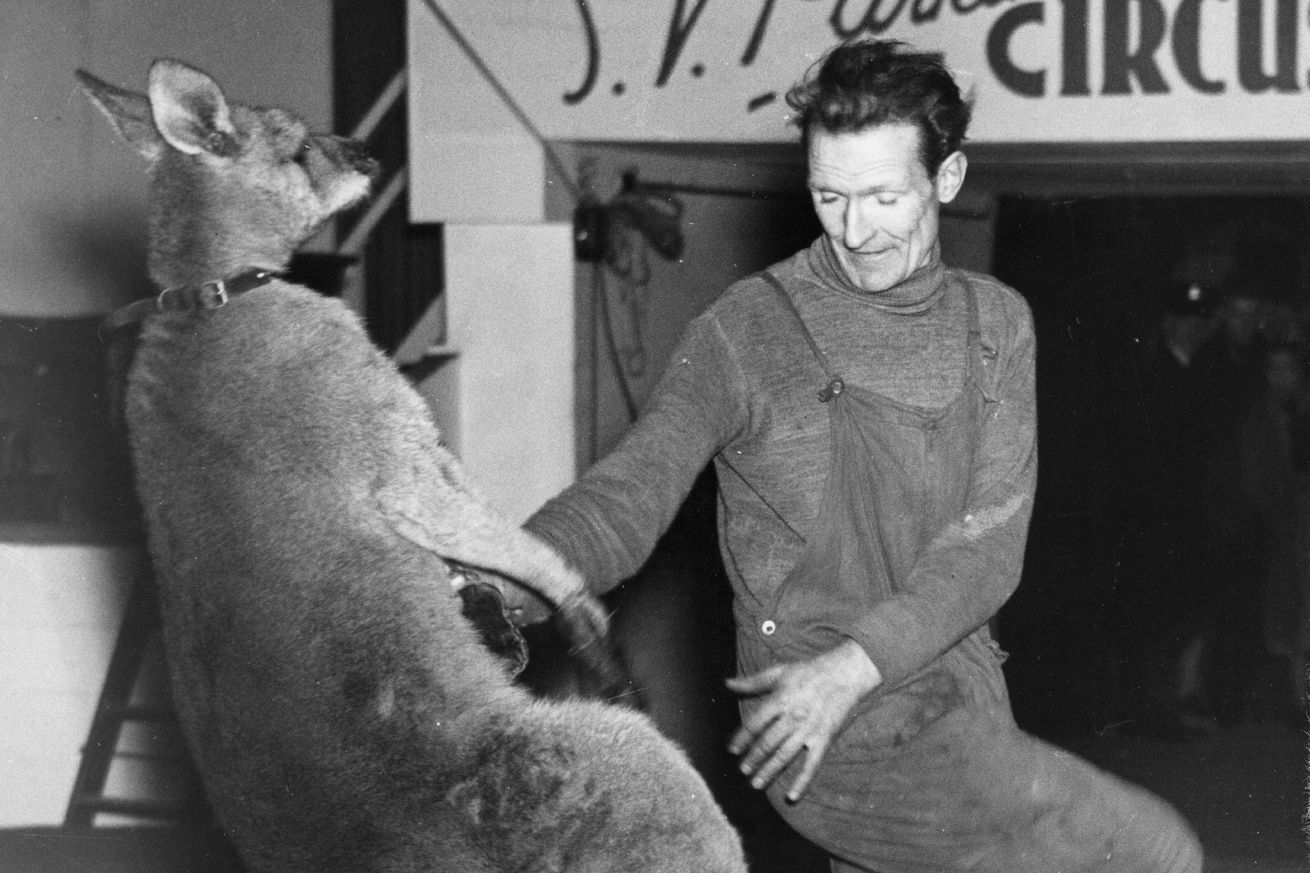
Australia is home to a unique variety of animals. Do any of them have a future as major league players?
(Sean Keane is honeymooning in Australia but he’s renewing his commitment to the McCovey Chronicles readers.)
During my time in Australia, I’ve seen a lot of different places and unique animals. And, as a baseball writer, I felt I should also make this a scouting trip. So here is a profile of some of the most notable Australian animals and an analysis of what kind of San Francisco Giants they’d be. After all, there’s nothing in the rule book that says a Tasmanian devil can’t play professional baseball, at least according to “Air Bud: Seventh Inning Fetch.”
Kangaroo: I see the kangaroo as a center fielder type. It grows up to 10 feet tall, with its tail adding another three feet. That helps with the propulsion of its tail, enabling the kangaroo to hop up to 10 feet off the ground, perfect for robbing home runs. While some purists consider it showboating, the kangaroo is adept at the classic basket catch, where a baseball lands in its forward-opening pouch.
The kangaroo’s heavy tail and thick legs also suggest the marsupial has huge power potential. Perhaps if it focused full-time on baseball instead of boxing, we’d start to see some home runs.
As for its clubhouse demeanor, the kangaroo does often chew on regurgitated food and often licks its arms to stay cool. By baseball standards, that’s no grosser then chewing tobacco. There might be an issue that the ‘roos communicate by whacking their tails on the ground, which could create unwelcome associations with the Houston Astros’ trashcan-thumbing signals for sign stealing.
Emu: Australia’s signature bird, the flightless emu has a good frame with a height of up to 6’3”. The emu profiles as a base-stealing threat with its top stride length of nine feet and a top running speed of 30 MPH. There’s a need for some coaching on the basepaths, as the emu has a tendency to kick with sharp claws on its toes. This isn’t Ty Cobb’s era anymore. The emu might set off some bench-clearing brawls.
That being said, I can’t see the emu as much of a threat at the plate. Nor in the field. The emu’s speed is tempting in the outfield, but the bird’s chaotic running pattern doesn’t speak to efficient ball tracking. At best, this animal is a Darren Ford type.
Koala: The koala has strong thigh muscles and densely packed fur on its rump, an aid for a creature that spends the majority of its time sitting in a tree. It also relies heavily on its sense of smell and its large ears, since its vision is severely underdeveloped.
Squats all day, can’t see, but has huge ears to hear any complaint? Sounds like an umpire to me.
Wallaby: The wallaby is like a smaller version of a kangaroo, maxing out around six feet. Still, its leaping ability (up to six feet) makes up for being more slow-footed than its marsupial cousins. That’s an ideal first baseman type, able to corral high throws and keep a its back legs on the bag, which are well-adapted for gripping. I think having the wallaby’s tail touching the bag would also count.
One problem is their pouch. Wallabies can’t resist the hidden ball trick, and let’s just say the ball is gonna get pretty smelly after a wallaby unsuccessfully tries its scheme over and over.
Wombat: Despite having the word “bat” in their names, it’s hard to imagine the three-foot-tall wombat making an impact at the major league level. Except in a situation like Eddie Gaedel, the 3-foot-7 little person Bill Veeck hired to pinch-hit — and draw a walk — in 1951.
Even with its theoretical on-base ability, having a wombat dig tunnels under the infield while depositing its square-shaped feces all around makes the wombat more trouble for a baseball team than it’s worth.
Tasmanian Devil: The only carnivorous marsupial, the devil’s level of competition is tough to judge, since it only lives on the island of Tasmania. It’s short and stocky, but the Tasmanian devil is fast and agile. Maybe it has a weird build, but so did Yogi Berra and he’s the greatest catcher of all time.
Its fiery demeanor would work well behind the plate, where its pungent odor would also distract opposing hitters. Yeah, it’s unpleasant, but is a Tasmanian devil worse to be around than Albert Belle or Trevor Bauer?
Dingo: There’s debate among scientists whether the dingo is a variety of the domesticated dog, part of the wolf family, or its own species. One thing is clear: They’ve got that dog in them.
The dingo profiles as a swingman, with its main attributes being above-average but not overwhelming speed, and a lot of stamina. As a long reliever and scavenger, expect the dingo to vulture a number of wins. Basically, this canine can eat innings. And your baby, so be careful.